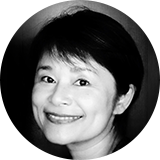An article in the July 4th edition of the Wall Street Journal recently caught my attention. It said that more workers are quitting their jobs and taking advantage of a labor market that prioritizes employees over employers. According to data from the US Federal Reserve Bank, Americans who change jobs were earning 48% more in annual pay increases in 2018 than those who do not. Such a contrast, I thought.
Since joining NHK in 1987, I’ve been a television journalist reporting mainly from abroad. Some of my foreign friends ask me if it is typical for a Japanese journalist to stick to one company for so long. It is, although many prominent foreign journalists at BBC and CNN that I came across 10 or 20 years ago are still working at those organizations, too.
In Japan, the shushin-koyo or lifetime employment model remains common, especially among big firms. The bubble economy that burst in the early 1990’s and the subsequent “two lost decades” of economic stagnation were a blow to the traditional system. Many companies went bankrupt and people had to find other jobs. At the time, those who had worked outside Japan, in the US or in Europe, thought it was a great opportunity to increase employment mobility and create a more dynamic labor market.
What’s happened since then? The Japanese labor market is a little more flexible, but also more divided and unequal. One group enjoys the benefits of permanent employment while the other, non-regular workers, are on short-term contracts with lower pay. The latter group includes many women who return to work after raising children, and foreign workers hired as "technical interns."
Setting aside this complicated issue for now, a 2015 survey by the Japan Institute for Labor Policy and Training suggests the concept of shushin-koyo is more popular than ever, at a staggering 87.9 percent. That's the highest since the survey began in 1999. The preference is remarkably strong among the younger generation in their 20’s and 30’s. This is yet another example of the conservative tendencies of young people here.

One section of the survey, though, signals a change. Over 80 percent of respondents said they don’t mind seeing more women in the workplace and women in management positions, or working for a female boss. Good. I hope my own colleagues also don’t mind working with me.
I know that our viewers rarely read columns like this by Japanese journalists writing in English. I will be posting these snippets quite regularly I hope, to explain the things that you may find difficult to understand, and to offer my perspective on events in Japan and the world.

